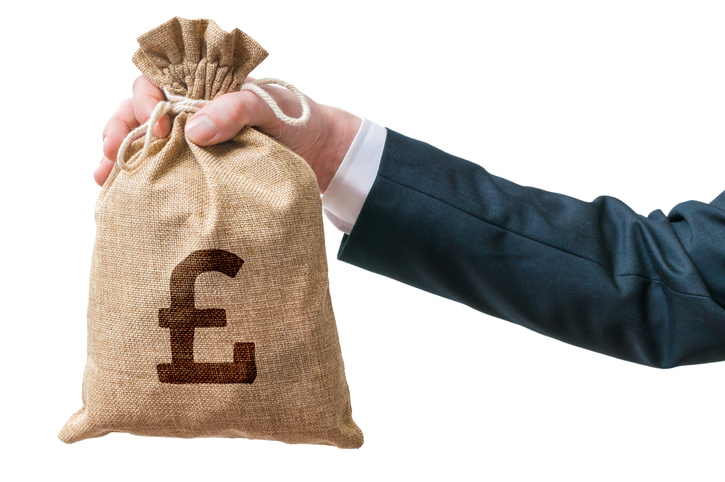
IHT Valuations of Assets and Estates

General Rules
In order to establish how much Inheritance tax (“IHT”) an individual is liable to, an estimate of the value of their relevant assets is needed.
The basic valuation rule for valuing the property of an individual is that any property should be valued at the same price as it would be expected to be realistically sold in the ‘open market’ at that time.
First of all, it is important to identify all property that needs to be valued. For a lifetime gift it will be the assets being gifted however for transfers on death a ‘gross’ valuation of the estate is needed, which is the value of the sum of all assets. This may include; money at the bank, property, land, cars, jewellery, pensions, investments, life assurance policies and so on.
After all assets have been established, all liabilities must be calculated. This may include mortgages and loans, outstanding bills and funeral costs. The amount that is owed is then deducted from the gross valuation to arrive at the ‘net’ valuation of an estate.
Once the net valuation has been established, all allowable additions and deductions must be considered, including gifts that the deceased has made within the last 7 years from the date of death.
With the above considered and calculated, this will bring the deceased’s estate to the amount on which IHT is chargeable. IHT is charged at 40% on all chargeable assets, however there is a nil rate band for the first £325,000 of cumulative chargeable transfers, a possible spouse to spouse exemption and many other reliefs as set out in the articles following across our IHT Awareness Fortnight.
There are certain rules for valuing different types of property, including ‘related property’ and ‘jointly owned property’ which we will look at in more detail below.

Related Property
Certain assets will have ‘related property’ which is essentially when there are similar assets owned by a spouse or civil partner. The related property rules will apply where an asset is valued at a higher amount when its ‘related property’ is taken into consideration.
For example, one spouse may own 3 antique chairs and their partner may own 1 antique chair, but together the 4 chairs form a set. As a result, the value per chair is likely to increase as the value of one chair in a set of 4 would be higher than a single chair alone.
Both the ‘stand-alone’ value and the ‘related property’ value are taken into consideration when calculating the final valuation of the asset. Calculations can be complicated when it comes to related property and rules can differ depending on the type of asset, but it is certainly important to understand these rules when valuing an estate. If you would like further information on how to value your related property, please get in touch.

Joint Property
Joint Property
An individual may have property that is jointly owned with other people. Their share of the asset will usually be calculated as a proportion to the whole, jointly owned asset at the date of death.
Jointly owned and related property
If property is jointly owned with a spouse or civil partner, the ‘related property’ rules must be considered. A share of a property is likely to be worth more when valued as a proportion of the whole property rather than when it is valued separately. Both the stand alone value and the related property value will be considered and whichever is the highest will be used.
Jointly owned assets with a non-spouse/civil partner
If property is jointly owned with a non-spouse or civil partner, a different set of rules will apply. As explained under ‘Related Property’, the value of a property when both shares are taken into consideration is likely to be higher than when one share is valued alone. As the ‘related property’ rules do not apply to non-spouses/civil partners, the individual share of the property must be valued on a stand-alone basis. In these circumstances, the value of, say, half of the property would not be worth half of the whole property if it were to be sold alone at open market value, as the remainder of the property would be owned by another tenant. With this in mind, a ‘tenanted deduction’ is usually applied, which is a deduction of between 5% and 15% as appropriate, to reflect the fact that half of the property is less valuable when it is sold separately, as well as the fact that part of the property is likely to be difficult to sell.
If property is owned jointly, we must also determine whether the property is owned as ‘joint tenants’ or ‘tenants in common’.
Joint tenants
A joint tenant owns an asset equally with the other joint tenants. If an asset is owned as joint tenants, this means that no owner has a distinct share of the asset. In order to value one owner’s share, the total value of the asset is simply divided by the total number of owners. The deceased’s share of the asset is automatically split equally between the other owners upon death. As a result, it will not form part of their estate, however the valuation amount is still considered for calculating IHT.
Tenants in common
If an asset is owned jointly by tenants in common, this means that each owner has a distinct share in the asset. To calculate one owner’s share in this situation, this will just be a simple calculation of value of the individual share. Tenants in common usually deal with their share of the asset independently, unlike joint tenants. Therefore, the deceased’s share of the property will form part of their estate.
In either of the above circumstances, the same joint property valuation rules will apply, i.e. the property will be valued using the ‘related property’ rules or it will be valued with a ‘tenanted deduction’. It is important to determine whether the property is owned as joint tenants or as tenants in common in order to establish the destination of the asset upon death, determining a conclusive set of assets in the deceased’s estate.

Private and Listed Company Shares
On the face of it Open Market Value for listed and unlisted company shares may be presumed to be straightforward, but pitfalls and opportunities can arise in several ways. For instance, a minority interest deduction will dramatically affect the value of a private company shareholding and so the value of a 51% interest can be totally disproportionate to the value of a 49% shareholding. If a donor gives away control of a company through a small gift, the value of the gift can be considerably more than the pro-rata value of a company as a whole.
Opportunities can arise for post death reductions in estate values for certain listed securities which may have depreciated in value between death and the date those investments are sold. In certain circumstances, realized proceeds can be used instead of values at the date of death.
We have touched on the basics of valuations above, however there are many other factors to take into consideration when valuing a lifetime gift or an estate. For further details and information please feel free to get in touch.

Should you have any queries or questions in respect of the above, please reach out to your usual Arnold Hill & Co contact or call our mainline number 0207 306 9100.
The information in this article is believed to be factually correct at the time of writing and publication, but is not intended to constitute advice. No liability is accepted for any loss howsoever arising as a result of the contents of this article. Specific advice should be sought before entering into, or refraining from entering into any transaction.
